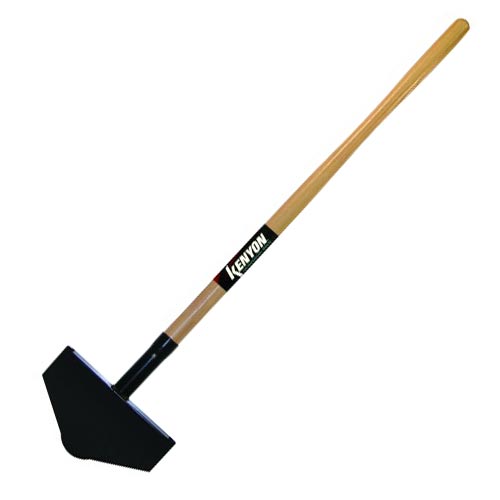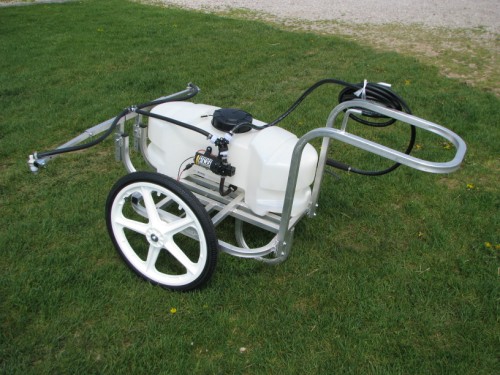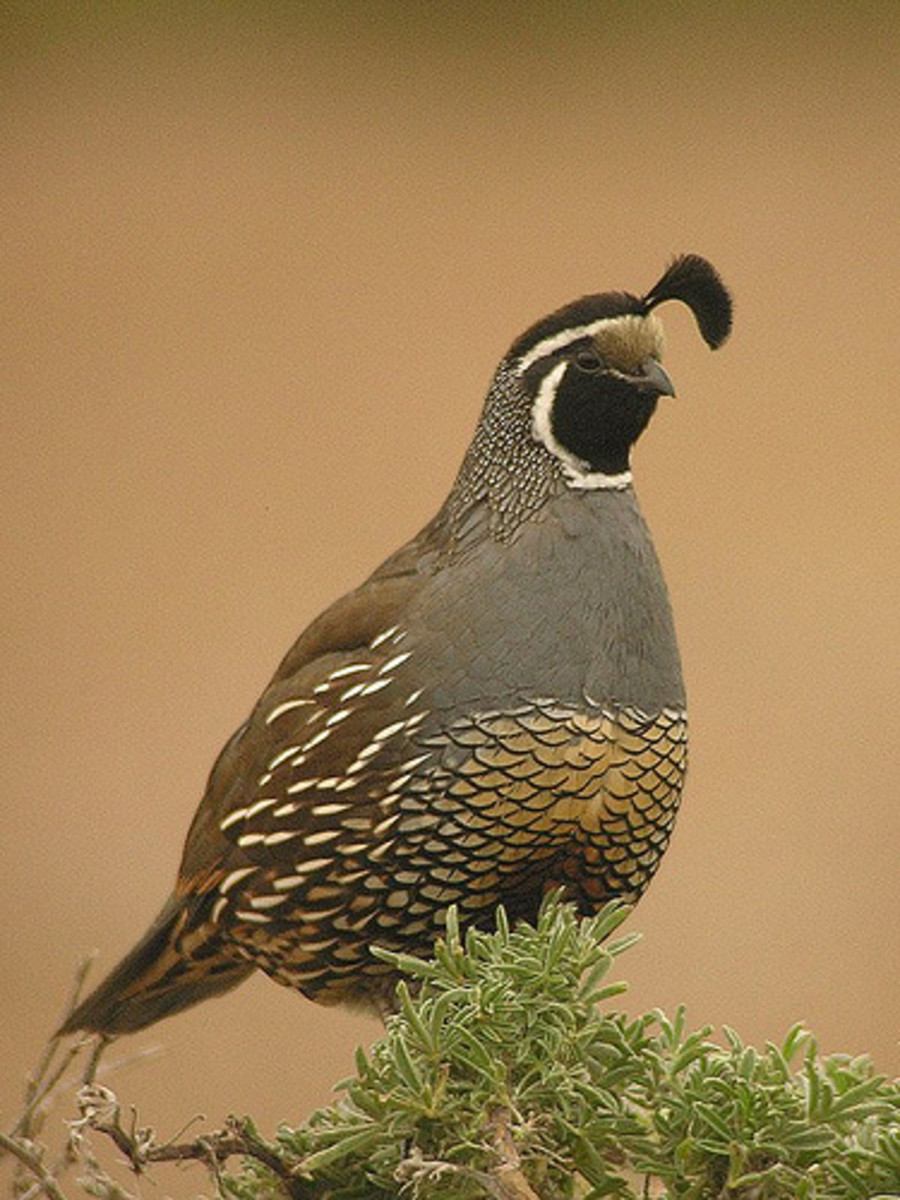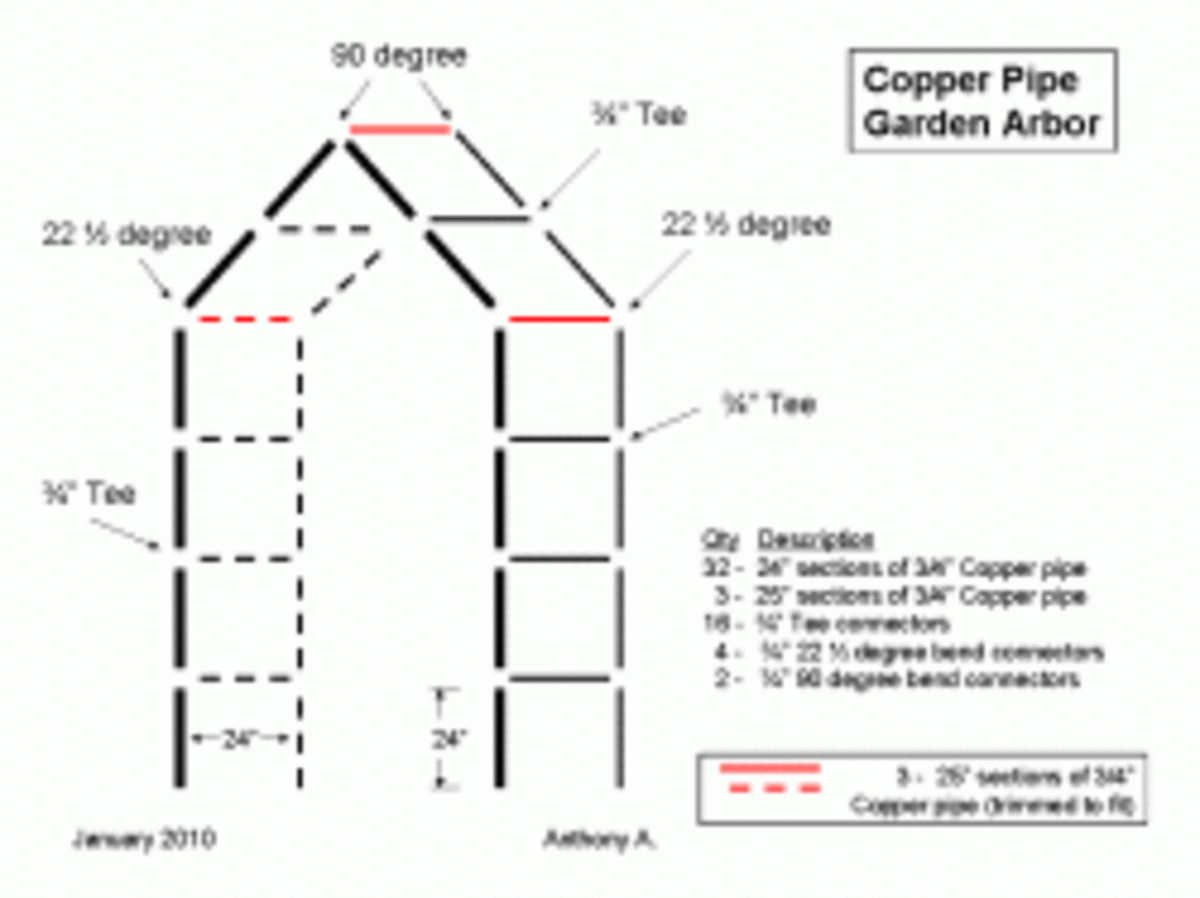Planting Trees and Bushes? How to make sure they grow!


Planting new trees and bushes in the spring? Why spend hundreds or thousands of dollars on new landscape to just watch it burn up in the Summer?
Homesteaders who dream of a booming orchard or berry patch just plant at the wrong time and then fail to water new trees, and bushes until the root ball can self-sustain the life of the tree.
People who are hoping to someday fuel their self-sufficient homestead with fresh fruits, berries and nuts become discouraged and blame the soil for not producing their dream of self-sufficient food supply.
Many will run out purchase new plantings in the spring and plant just before the summer heat zaps them while the small root structure is also trying to feed new upper growth.
Hands down the fall is our best time to plant new trees and bushes. During this time of year the trees are preparing for winter and the top is not dependent on the sap and nutrients required during the spring and summer growth.
The cooler weather also does not zap the moister from the transplants. This provides less stress on the transplanted root structure.
Oddly enough, but well for us as the consumer most nurseries will deeply discount their plants in the late summer. So waiting to plant this time of the year can yield some real bargains.
In our part of the country Coastal Texas, everything gets marked down 75% after August. We will trailer our plantings home and place them in one location close to a sprinkler head and add some mulch to hold them for an October planting.
When hauling trees home be sure to protect the leaves from becoming wind burned either cover with a trap or find a route home where you keep your speed under 50 miles per hour.
Most trees fail to thrive because of the lack of moister or planting the root ball too deep. People often dream bigger than reality and will plant more than they can maintain or not fully realize the commitment it takes to water and watch the new trees through the first and second year until the root structure is able to expand enough to capture the moister on its own.
Depending on the size and rain fall, new trees may require a ½ to a full 5 gal bucket of water every few days during dry periods. The chore of hauling that water or dragging out the hoses can quickly become pretty old and many won’t keep it up long term.
The best and really cost effective method is to add irrigation in at the time of planting. Cheap poly tubing can be purchased and either equipped with shrub sprinkler heads or tapped with drip nozzles.
Poly pipe can run on top of the ground for a hedge row where mowing in between is not needed or trenched in by hand between the trees for mowing.
Trenching can be accomplished by renting a narrow trencher or our preference is to go out just after a soaking rain using a flat spade to step into the soil and pull open the sod just enough to slip in the poly pipe.
Cottage Craft Works does carry a hand trencher for this purpose. You can see it at this link.
We just work this method in a row until we reach the next tree loop up and then start the same process on to the next tree. We also use a 1” board to pull ahead an open the sod up while unrolling the poly and then carefully push it down into the sod on the back end.
After the poly is down we just simply walk back over the top and push the sod back down. Once you figure out the sequence it actually goes pretty quickly to lay out a 100’ roll of 1” poly tubing.
Freezing temps could create a problem with this shallow system, but regardless how deep you put the poly in the loops up to the tree will still be a freezing issue. Poly is rather expandable and will take some freezing temperatures.
If you live in a Northern environment and are concerned with freezing add a threaded truck tire valve stem in the system to blow out the water with (low) air pressure before the winter months arrive.
The poly pipe can be equipped with a standard hose bib to hook to a faucet, hooked to a manual water timer and then hooked to the faucet, or hooked to a plumbed in electric water valve and low voltage timer used in underground sprinkler systems.
Having it set up on a timer will allow you to set the time and the frequency of watering and makes life so much easier and keep the long term watering commitment.
These timers come in as small as four stations or as many as six stations. Some are also available with a pump start feature which means you can run a separate irrigation pump from a pond or stream using a pump relay switch to irrigate with.
Low voltage wire can also be run (using the same trench methods) from one timer out to several zone water valves throughout the yard.
This means you could have an orchard system, and then on another part of the property have berry bush irrigation, and even one or more zones going over to a garden.
A drip system will work with a gravity flow system coming off a rain gutter catch system, where no pump will be required. The sprinkler timer is low voltage and will work off a 24 volt system to hook to a battery and solar charger for an off-grid system.
Drip irrigation works the best off a gravity flow system since it also uses less water. You will need to do a catch test from one of the heads to determine the time it takes to fill a quart can and then do the math from that point on how often and how much water you want to apply in order to set the timer.
The drip irrigation tips attached to the poly tube by using a push punch tool to penetrate the poly. (It will be sold next to the poly pipe and heads). A drip head can be then pushed into the hole, or another adapter pushed in to run ¼” plastic tubing to other plant locations.
For trees we like to punch and add a drip head on each side of the tree about 12” -18” from the new tree trunk to water the root system on both sides. You can put in 100’ poly and enough heads to do 20 trees for under $50.
There are many books that seem to just dwell on the digging and the preparation of the planting site. We find most trees will do well if again planted in the fall and watered during the hot and dry spell of the summer.
We have planted trees on our side of the fence while I neighbor planted trees on their side of the fence. They spent all day digging a perfect hole, hauling in all type of additional soil and going line by line by the book.
We just walked out after a heavy rain dug our holes set the tree in place and back filled with the soil we dug out. The next year our trees were taking hold theirs died, because they just didn't take care of them.
Unless the soil is just extremely poor or all the top soil has been removed down to clay, there shouldn't be a need to spend a lot of time and money on the planting preparation as some do. If the soil is poor then surrounding the root ball with good soft nutrient enriched soil will allow the root ball to expand and take hold that make sense.
Eventually the roots will need to adapt and expand into the clay anyway in order for the tree to grow. It would be impossible to dig a large enough hole and back fill with new soil to accommodate the type of root structure the tree will require even in as little as 10 years.
The depth of the planting is very important though. If the top of the root ball is planted level or below the existing soil line the tree will not thrive and probably die.
We like to leave about 3” of the top of the ball above ground and then use mulch to cover the top to keep moister in.
You never want to cover the top of the ball with dirt or even add a lot of dirt on top of an existing mature tree as it will kill it out.
If you are planting bare rooted trees and bushes, they might need extra composted soil, but we have just taken a spade again after a good soaking rain dug down deep moved the spade back and forth and wiggled and pushed the roots down into the hole keeping what would be the top of the root ball just at the top of the ground and then pushed the top of the soil around the tree or bush with our boots and went on to the next planting. This is how the US Forest Services planted new trees for years before machines.
We have successfully planted bare rooted pine trees, berry bushes, and fence hedge rows with this method. But again we make sure we have a way to keep them watered during the hot dry spells until the root ball develops to where it can self sustain the tree.
You can spread some fertilizer around the base of the tree to help feed it or water occasionally with a water soluble fertilizer.
Personally we like to give them a boost after the first year and then every two years by taking a heavy pointed pry bar after another soaking rain and punch down a hole on each side of the tree just where the drip line has been established.
We then fill the holes with cheap 12-12-12 granular fertilizer using a little funnel with a trap door for filling bird feeders. We like this funnel because we can stop the fertilizer before it overflows out on to the top of the ground.
It takes about five years for the fruit trees to begin to produce. Once the trees begin producing an early spring fruit tree oil spray will help keep down the chance of diseases and pest and then spraying throughout the growing season up to harvest will provide less chance of diseases and pest infestation.
For spraying large areas and trees, take a look at the self contained Garden, Yard, and Orchard Sprayer from Cottage Craft Works. It has a space to add a 12 volt battery and will allow you to reach areas where a tractor sprayer just can't get to, or when you have just too large of an area for a hand pump sprayer.
Cottage Craft Works carries many different products for the homestead and the back-to-basic country lifestyle.



